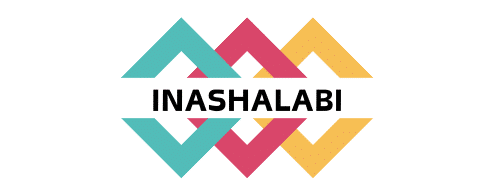How to Create Engaging STEAM (Science, Technology, Engineering, Arts, Math) Programs in UK Schools?

STEAM education is the multidisciplinary approach to teaching that blends Science, Technology, Engineering, Arts, and Mathematics. This approach aims to foster critical thinking and innovative problem-solving skills in students, qualities that are highly sought after in the 21st-century job market. Schools across the UK are now under pressure to implement this approach effectively. It’s not just about ticking a box for a curriculum requirement; it’s about preparing young people for future careers and giving them the confidence to navigate a rapidly evolving technology-driven world. Here, we delve into how to create engaging STEAM programs in UK schools.
Integrating STEAM into the Curriculum
The first step in creating an engaging STEAM program is integrating it into the school curriculum. This is often a challenge for schools due to the traditionally separate nature of these subjects. However, you can overcome this hurdle by rethinking the curriculum design and introducing cross-curricular projects.
Sujet a lire : How Can UK’s Public Spaces Be Redesigned for Better Accessibility and Inclusion?
For example, a project could involve students using mathematical calculations to design a bridge, integrating elements of science, technology, and engineering. This approach not only allows students to see the interconnectedness of these disciplines but also enables them to apply their knowledge in a practical, hands-on way that enhances their learning experience. In arts, students can be encouraged to create visual representations of scientific concepts or technological developments, thus bridging the gap between the arts and STEM.
Furthermore, integrating technology into the learning process can further enrich the STEAM experience. Introducing tools like digital microscopes, 3D printers, coding software, and even virtual reality tech can make learning more interactive and exciting for students.
Dans le meme genre : What Are the Health Benefits of Urban Green Spaces for UK City Dwellers?
Training Teachers for STEAM Education
An essential component of effective STEAM programs is well-trained teachers. Without the necessary knowledge and skills, teachers may struggle to deliver the multidisciplinary, hands-on approach that characterises STEAM. Therefore, schools should invest in comprehensive teacher training programs to equip their staff with the necessary skills.
Training should be two-fold. Firstly, teachers need a thorough understanding of the individual STEAM subjects. This doesn’t mean every teacher needs to be an expert in all areas, but a basic understanding is essential. Secondly, teachers need to be trained in how to deliver these subjects in an integrated, hands-on way. This might involve training in project-based learning methods, the use of technology in the classroom, or strategies for encouraging creative thinking and problem-solving.
It’s also worth considering partnerships with local universities, businesses, and industry experts who can provide specialised knowledge and resources, contributing to a more authentic and enriching STEAM experience for students.
Creating a STEAM-Supportive Environment
The physical learning environment plays a vital role in fostering a successful STEAM culture. A flexible, interactive space can stimulate creativity, collaboration, and problem-solving, all of which are central to the STEAM approach.
Think about how you can adapt your classrooms to support hands-on learning. This could mean replacing traditional desks with workbenches or introducing mobile furniture that can be rearranged depending on the activity. Science labs should be well-equipped with the latest technology, and art rooms should be stocked with a variety of materials to support creative exploration.
Additionally, creating a "STEAM hub" – a dedicated space where students can work on STEAM projects outside of regular class hours – can encourage ongoing engagement. This could be a computer lab equipped with coding software, a makerspace with tools and materials for building and creating, or even an outdoor space for environmental science projects.
Involving Parents and the Community
Involving parents and the community can give a significant boost to your STEAM programs. Parents can support their children’s learning at home, encourage curiosity, and reinforce the importance of the skills being developed.
Communicate with parents regularly, keeping them informed about what their children are learning and how they can support this at home. Consider hosting STEAM nights where families can come and engage in hands-on activities, or showcase students’ projects at an open house.
Engaging with the local community can also provide valuable opportunities for students. Partnerships with local businesses can offer hands-on work experience to older students, while community projects can give students a sense of civic responsibility and the chance to apply their STEAM skills in a real-world context.
Evaluating and Improving Your STEAM Program
Finally, continuous evaluation and improvement are key to the success of any STEAM program. Regular feedback from students, teachers, and parents can provide insight into what is working well and where adjustments might be needed.
Consider using tools like Crossref and MDPI to access current research on STEAM education. These platforms offer a wealth of academic articles on best practices, emerging trends, and effective strategies for STEAM teaching. This will enable you to keep up to date with the latest developments in the field and ensure your program remains current and engaging.
Remember, creating a successful STEAM program is not a one-time event but a continuous process. It requires ongoing commitment, creativity, and flexibility from all stakeholders. By integrating STEAM into the curriculum, training teachers, creating a supportive environment, involving parents and the community, and regularly evaluating and improving your program, you can create a truly engaging and effective STEAM education program in your school.
Encouraging Computational Thinking and Augmented Reality in STEAM
An effective way to boost engagement in STEAM programs is by promoting computational thinking and the use of augmented reality. Computational thinking refers to a problem-solving process that includes formulating problems in a way that a computer can execute, logically organizing data, and creating solutions. This is a critical skill in the digital age, and it forms the backbone of disciplines such as coding and programming.
The key to teaching computational thinking is to break it down into manageable chunks. Start by introducing students to algorithms, which are a set of instructions designed to perform a specific task. This can be as simple as creating a recipe or planning a route on a map. As students become comfortable with algorithms, you can introduce more complex concepts such as loops, sequences, and conditionals. Tools such as Scratch or Code.org can be invaluable in teaching these concepts in a fun and interactive way.
Augmented reality (AR), on the other hand, can significantly enhance the learning experience in STEAM education. AR adds a digital layer to the physical world, enabling students to interact with virtual objects. For instance, students can dissect a virtual frog in a biology class or explore the solar system in a physics lesson. This not only fosters a deeper understanding of the concepts but also makes learning more exciting and immersive.
Leveraging Open Access Resources and Platforms
When it comes to STEAM education, there are numerous open access resources and platforms available that can aid in creating an engaging program. Websites such as Google Scholar, Educ Google, and Scholar Crossref offer a wealth of information on the latest research and developments in STEAM education.
These resources provide detailed insights into various aspects of STEAM, including best practices in teaching, innovative ways to integrate the disciplines, and the impact of STEAM education on student outcomes. They also offer a plethora of scholarly articles, systematic reviews, and education sciences research papers that can help shape your STEAM curriculum and teaching methods.
Another benefit of these platforms is that they often provide access to open-source teaching resources. This includes lesson plans, project ideas, and interactive tools that can be used directly in the classroom. For instance, you might find a step-by-step guide for a science experiment, a project-based learning activity for a technology class, or a computational thinking challenge for a math lesson.
In addition, don’t overlook the potential of websites like YouTube, Khan Academy, and Coursera, which offer a wealth of video tutorials and online courses covering various STEAM topics. These can be a great way to supplement classroom instruction and provide additional support for students.
Conclusion
Creating an engaging STEAM program in UK schools is a multifaceted endeavour that goes beyond a simple amalgamation of Science, Technology, Engineering, Arts, and Mathematics. It requires a thoughtfully integrated curriculum, well-trained teachers, a supportive learning environment, parent and community involvement, and continuous evaluation and improvement.
Promoting computational thinking and the use of augmented reality can play a significant role in making STEAM education more engaging and relevant to the 21st-century learner. Meanwhile, leveraging open access resources and platforms can provide invaluable support in terms of research, teaching resources, and inspiration.
Remember, the ultimate goal of STEAM education is not only to equip students with the knowledge and skills they need for future careers but also to foster a love of learning, a sense of curiosity, and a confidence to tackle complex problems. By keeping this in mind, you can create a STEAM program that truly prepares students for the challenges and opportunities of the digital age.
